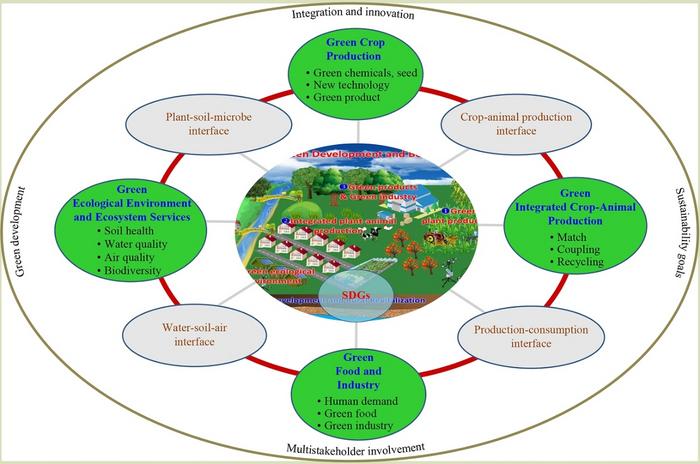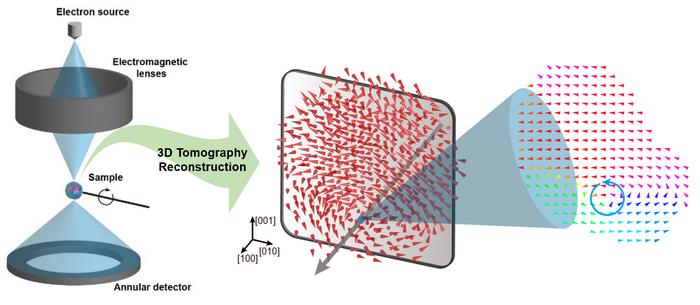Rice University Study Reveals Enhanced Cancer Treatment Through Focused Ultrasound Therapy
An innovative approach to cancer treatment has emerged from collaborative research conducted at Rice University and Vanderbilt University, focusing on a potent combination of tumor necrosis factor-related apoptosis-inducing ligand (TRAIL) therapy and low-intensity focused ultrasound (FUS). This groundbreaking study, recently published in the journal Advanced Science, presents compelling evidence that merging these two modalities can […]


An innovative approach to cancer treatment has emerged from collaborative research conducted at Rice University and Vanderbilt University, focusing on a potent combination of tumor necrosis factor-related apoptosis-inducing ligand (TRAIL) therapy and low-intensity focused ultrasound (FUS). This groundbreaking study, recently published in the journal Advanced Science, presents compelling evidence that merging these two modalities can significantly diminish tumor size in prostate cancer models. The revelations coming from this work hold the potential to reshape the landscape of prostate cancer therapy and provide hope for patients combating this formidable disease.
Prostate cancer is a significant health concern, with approximately 10 million cancer-related deaths globally each year. The research team, spearheaded by Michael King from Rice University and Charles Caskey from Vanderbilt University, made remarkable strides in understanding how non-invasive FUS enhances the efficacy of TRAIL therapy. TRAIL has been recognized for its ability to specifically induce cancer cell death, offering a more targeted approach to treatment compared to conventional chemotherapy techniques. However, despite its promise, TRAIL’s clinical application has been hampered by its short half-life in circulation and suboptimal efficacy when administered alone.
A primary challenge in developing successful TRAIL therapies revolves around the protein’s rapid degradation post-administration, often requiring patients to undergo multiple treatments throughout the day. This complexity not only diminishes patient compliance but also heightens the risk of adverse side effects due to frequent dosing. The collaboration aimed to address these hurdles by exploring how mechanical forces applied through FUS could potentiate TRAIL’s therapeutic effects while mitigating its limitations.
The study’s findings reveal that low-intensity FUS generates mechanical stimuli that activate Piezo1, a mechanosensitive ion channel. The activation of Piezo1 leads to an influx of calcium ions, triggering a cascade of cellular events that culminate in cancer cell apoptosis. Importantly, this mechanism works without compromising the integrity of surrounding healthy tissues, a critical consideration in cancer therapy. This insight signifies a pivotal advancement in the ongoing quest for more effective, less invasive treatments for prostate cancer.
Utilizing prostate cancer cell lines, the research team engaged in an array of experiments to refine the operational parameters of FUS. They meticulously balanced the intensity of the ultrasound with the sensitivity of the surrounding cells, ensuring that the healthy tissues remained unharmed while maximizing the apoptotic effects on malignant cells. Their findings indicated that the synergistic combination of TRAIL and FUS vastly outperformed each agent individually, asserting the importance of this dual approach in reducing tumor volume and cellular proliferation.
King articulated the urgency of finding safe and effective therapies for advanced prostate cancer, emphasizing that the need for innovative treatments is critical given the disease ranks as the second-leading cause of cancer-related deaths among men in the United States. This study exemplifies a significant leap forward in addressing this imperative, offering a non-invasive therapeutic avenue that could soon translate into real-world clinical applications.
As physicians and researchers continue to grapple with the intricate landscape of cancer treatment, the implications of this study extend far beyond prostate cancer. The foundational insights gained may lay the groundwork for the broader application of mechanotherapy across various cancer types, hinting at the vast potential of integrating mechanical stimuli with existing pharmacological treatments. The synergy between physical force and biotherapy could herald a new era of personalized cancer care, designed to maximize therapeutic benefits while minimizing unwanted side effects.
Moreover, this research highlights the importance of interdisciplinary collaboration in tackling complex health challenges. The convergence of expertise from bioengineering and radiological sciences has yielded significant advancements in understanding cancer therapy, suggesting that future breakthroughs may rely on similar cooperative frameworks. The success of this study could inspire further innovative research efforts that integrate diverse scientific disciplines to enhance treatment outcomes for cancer patients.
In conclusion, the groundbreaking study illuminates a promising path toward an innovative therapeutic strategy for treating prostate cancer. The combination of FUS and TRAIL demonstrates not only enhanced anticancer efficacy but also signifies a non-invasive methodology that could redefine treatment paradigms in oncology. As the research community continues to advance our understanding of mechanotherapy, the hope remains that such innovative approaches will lead to improved survival rates and quality of life for countless individuals affected by cancer.
This research, funded by notable grants from the National Institutes of Health and the National Science Foundation, underscores the evolving landscape of cancer treatment and the imperative for continued innovation in therapeutic approaches.
Subject of Research: Combining TRAIL therapy with low-intensity focused ultrasound for prostate cancer treatment.
Article Title: Applying ultrasound to mechanically and noninvasively sensitize prostate tumors to TRAIL-mediated apoptosis
News Publication Date: February 21, 2025
Web References: Rice University News, Advanced Science
References: Advanced Science Journal DOI: 10.1002/advs.202412995
Image Credits: Photo by Gustavo Raskosky/Rice University
Keywords: TRAIL therapy, focused ultrasound, prostate cancer, cancer treatment, apoptosis, mechanotherapy, synergistic effect, innovative research, noninvasive therapy, cancer mortality, therapeutic strategies, biomedical engineering.
Tags: advancements in cancer carecollaborative cancer research initiativesenhancing TRAIL efficacy with ultrasoundfocused ultrasound therapy for tumorsimproving patient outcomes in prostate cancerinnovative cancer treatment methodsnon-invasive cancer therapiesovercoming TRAIL therapy limitationsprostate cancer research breakthroughsRice University cancer treatment studyTRAIL therapy in prostate cancertumor reduction techniques
What's Your Reaction?

































